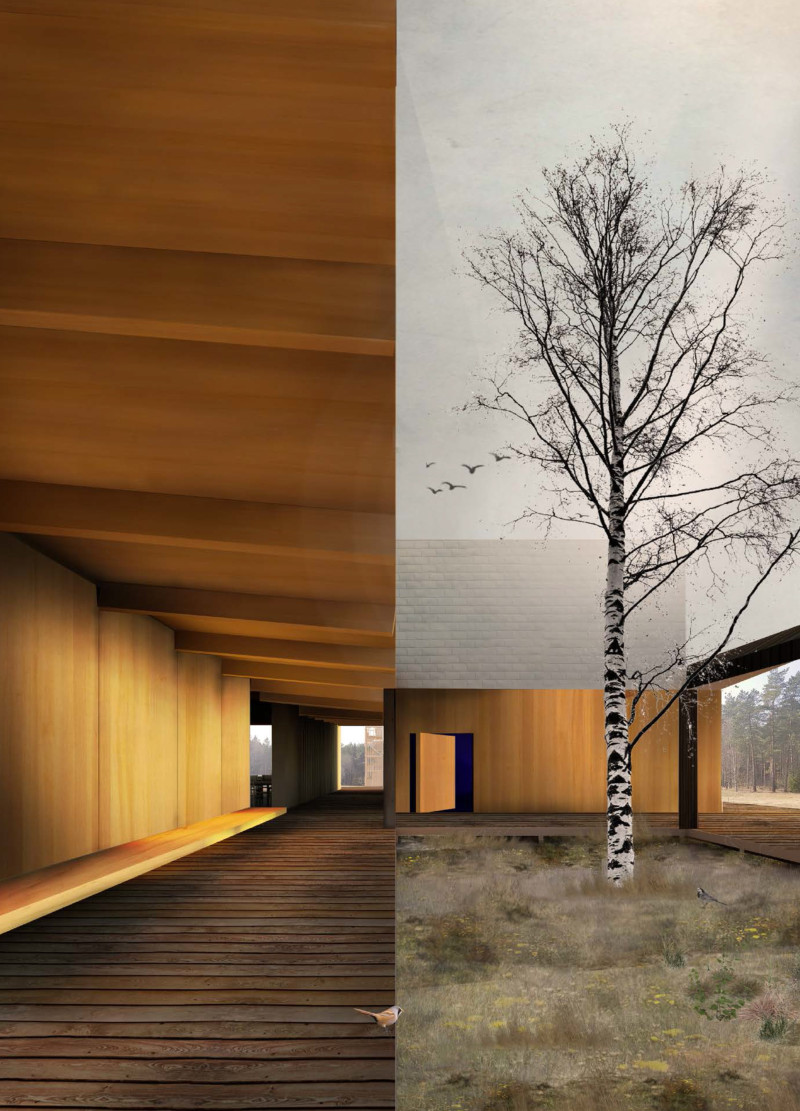5 key facts about this project
Architecture and Design Features
The design of the Visitor Centre emphasizes sustainability and harmony with nature. The structure has a low-rise profile, ensuring that it blends seamlessly into the surrounding environment. An extensive use of glass allows natural light to penetrate the building while providing expansive views of the bog and adjacent vegetation, fostering a direct connection to the landscape. The primary material used in construction is locally sourced timber, which reduces transportation emissions and aligns with the environmental principles of the project. Complementary materials, such as concrete and steel, contribute to the building's structural integrity while maintaining an aesthetic that is consistent with the natural surroundings.
The centre incorporates several functional zones designed to serve various visitor needs. Key spaces include an information gallery that educates visitors about the ecosystem of the bog, rest areas for relaxation, and a café that encourages social interaction. An observation tower provides elevated vantage points, allowing for immersive experiences with the landscape. Pathways leading from the car park to the entrance enhance accessibility and contribute to an intuitive flow throughout the site.
Sustainable Design Approaches
The architecture of the Great Kemeri Bog Visitor’s Centre is distinguished by its innovative integration with natural elements. The design strategically utilizes light with roof structures that include lightboxes, enhancing interior illumination without relying solely on artificial sources. The landscaping complements the architecture, prioritizing the preservation of existing vegetation to minimize ecological disruption.
Another unique aspect of the project is its emphasis on family-friendly features, including a playground and communal areas aimed at fostering community engagement. The design also incorporates educational exhibits that illuminate the ecological significance of the Kemeri region, promoting awareness and appreciation of the natural environment among visitors of all ages.
The Great Kemeri Bog Visitor's Centre embodies a cohesive relationship between architecture and nature, showcasing a commitment to sustainable practices and community involvement. The project effectively serves its purpose as an informational and recreational hub while respecting the ecological context of its location. For more details, including architectural plans, sections, and designs, please explore the presentation of this project for a comprehensive understanding of its innovative architectural ideas.


























